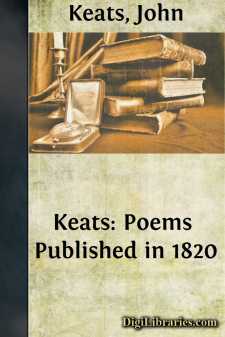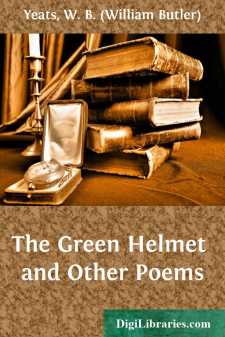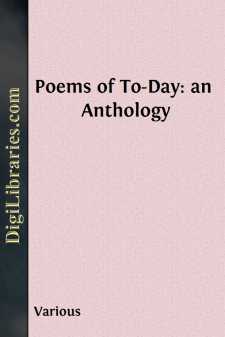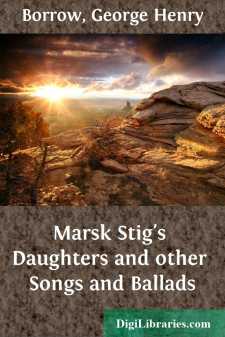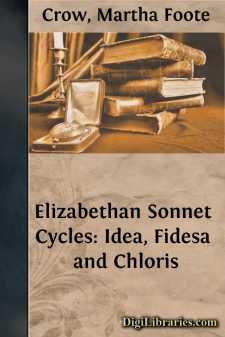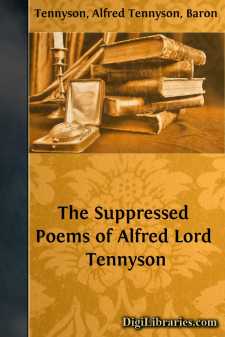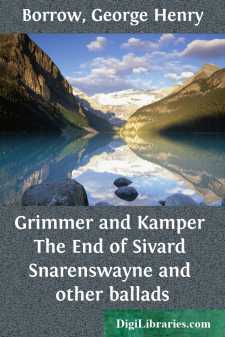Poetry
- American 96
- Ancient, Classical & Medieval 41
- Asian 15
- Australian & Oceanian 11
- Canadian 11
- Caribbean & Latin American 5
- Children's Poetry & Nursery rhymes 51
- Continental European 11
- English, Irish, Scottish, Welsh
- General 483
- Inspirational & Religious 7
- Middle Eastern 3
English, Irish, Scottish, Welsh Books
Sort by:
INTRODUCTION The Kalevala, or the Land of Heroes, as the word may be freely rendered, is the national epic of Finland, and as that country and its literature are still comparatively little known to English readers, some preliminary explanations are here necessary. On reference to a map of Europe, it will be seen that the north-western portion of the Russian Empire forms almost a peninsula, surrounded,...
more...
ANONYMOUS.1.Madrigal.Love not me for comely grace,For my pleasing eye or face;Nor for any outward part,No, nor for my constant heart:For those may fail or turn to ill,So thou and I shall sever:Keep therefore a true woman's eye,And love me still, but know not why;So hast thou the same reason stillTo doat upon me ever. 2.The Forsaken Merman.Come, dear children, let us away;Down and away below.Now my...
more...
by:
John Keats
LIFE OF KEATS Of all the great poets of the early nineteenth century—Wordsworth, Coleridge, Scott, Byron, Shelley, Keats—John Keats was the last born and the first to die. The length of his life was not one-third that of Wordsworth, who was born twenty-five years before him and outlived him by twenty-nine. Yet before his tragic death at twenty-six Keats had produced a body of poetry of such...
more...
HIS DREAM I swayed upon the gaudy stern The butt end of a steering oar, And everywhere that I could turn Men ran upon the shore. And though I would have hushed the crowd There was no mother’s son but said, “What is the figure in a shroud Upon a gaudy bed?” And fishes bubbling to the brim Cried out upon that thing beneath, It had such dignity of limb, By the sweet name of Death. Though I’d my...
more...
by:
Various
1. ALL THAT'S PAST Very old are the woods; And the buds that break Out of the briar's boughs, When March winds wake, So old with their beauty are— Oh, no man knows Through what wild centuries Roves back the rose. Very old are the brooks; And the rills that rise Where snow sleeps cold beneath The azure skies Sing such a...
more...
MARSK STIG’S DAUGHTERS Two daughters fair the Marshal had,O grievous was their fate and sad. The eldest she took her sister’s handAnd away they went to Sweden’s land. Home from the Stevn King Byrgye rode;Up to him Marsk Stig’s daughters trode. “What women ye who beset my gate?What brings ye hither at eve so late?” “Daughters of Stig, the Marshal brave,So earnestly thee for help we...
more...
A CHANNEL PASSAGE 1855Forth from Calais, at dawn of night, when sunset summer on autumn shone,Fared the steamer alert and loud through seas whence only the sun was gone:Soft and sweet as the sky they smiled, and bade man welcome: a dim sweet hourGleamed and whispered in wind and sea, and heaven was fair as a field in flower.Stars fulfilled the desire of the darkling world as with music: the starbright...
more...
The true story of the life of Michael Drayton might be told to, vindicate the poetic traditions of the olden time. A child-poet wandering in fay-haunted Arden, or listening to the harper that frequented the fireside of Polesworth Hall where the boy was a petted page, later the honoured almoner of the bounty of many patrons, one who "not unworthily," as Tofte said, "beareth the name of the...
more...
Timbuctoo A POEMWHICH OBTAINEDTHE CHANCELLOR'S MEDALAT THE Cambridge Commencement MDCCCXXIX BYA. TENNYSON Of Trinity College [Printed in Cambridge Chronicle and Journal of Friday, July 10, 1829, and at the University Press by James Smith, among the Prolusiones Academicæ Præmiis annuis dignatæ et in Curia Cantabrigiensi Recitatæ Comitiis Maximis, MDCCCXXIX. Republished in Cambridge Prize Poems,...
more...
GRIMMER AND KAMPER Grimmer walks upon the floor, Well can Grimmer wield his sword:“Give to me fair Ingeborg, For the sake of Christ our Lord.” “Far too little art thou, lad, Thou about thee canst not hack;When thou comest ’mong other kemps, Ever do they drive thee back.” “Not so little, Sire, am I, I myself full well can guard;When I fight with kempions I Gallantly...
more...




